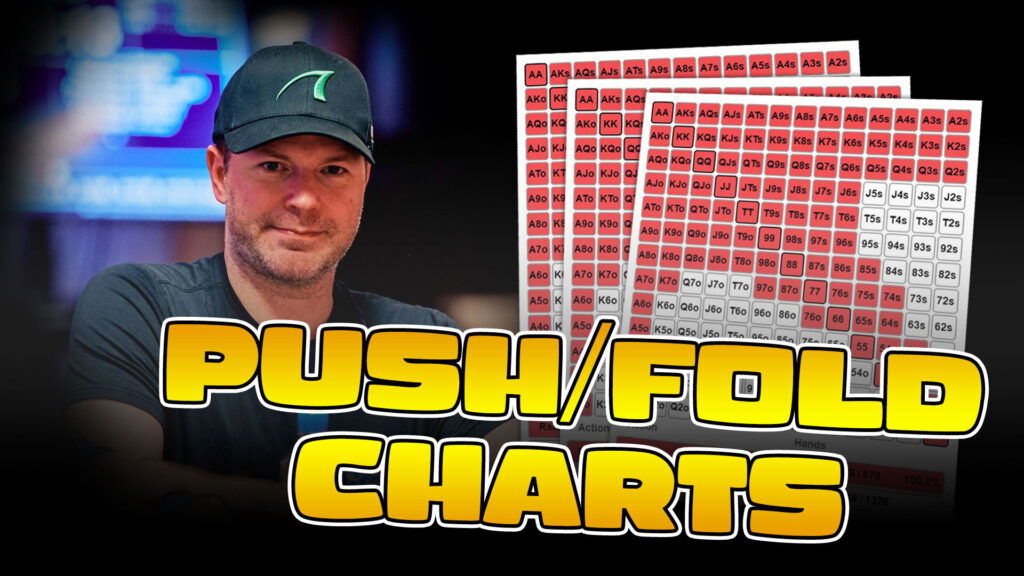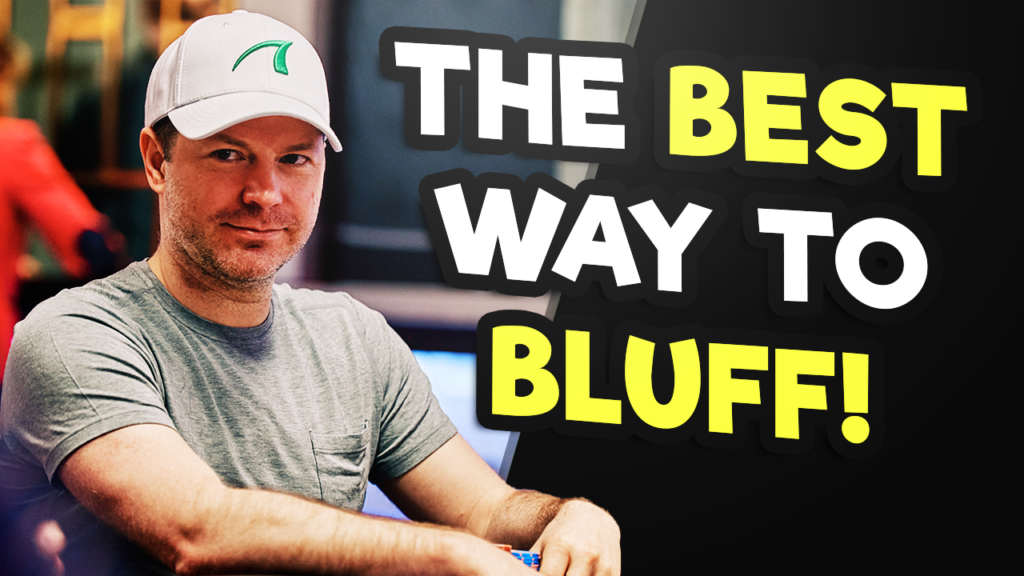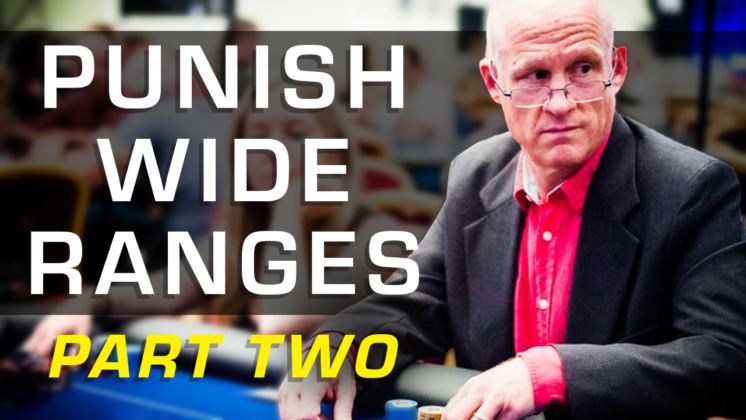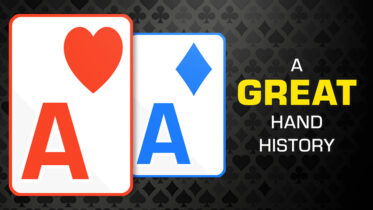In the first installment of Three Ways to Punish Wide Preflop Ranges, we discussed how poker players see too many flops, and began to review how to exploit that mistake. I said that one thing you can do is limp with certain classes of hands in early position. The first group of hands I suggested is the “classics” – AA-QQ and AK. The ones that you’re used to seeing people limp/re-raise in early position. Or maybe even limp/call if they want to be extra tricky (i.e. unwise).
The next category of hands you might limp is one you may not expect – let’s look at it now.
Consider limping with speculative hands that would like to see a flop
Think about hands such as 7♥7♦ and T♦9♦. These hands can flop well, but don’t do well if they open, but are faced with a raft of callers behind them. Let’s say you’re in a $1/$3 game, open 8♣8♠ to $10 in early position, and get four callers. Unless you flop a set, you’re unlikely to win the hand. But it sure would be nice to go set-mining with that hand. So you can consider limping for $3, and seeing what transpires behind you. If there’s a raise and a 3-bet, you fold. If there’s a single reasonable raise, then you can safely call. If there is no raise, and the big blind checks, you’ve gotten to mine your set for the best possible price.
The same is true of a hand such as T♦9♦. The difference with T9s is that its most frequent way of hitting the flop is with a draw, rather than a made hand (88 flops a set or it doesn’t).
And this is where the hands diverge in terms of how you respond to a raise after you’ve limped in. With 77, it’s best to call, assuming that the raise is small enough that you can appropriately set-mine. You can also call with your T9s, again, if the raise is small and the stacks are deep enough.
In short, you are paying one big blind with these speculative hands for the privilege of seeing what happens behind you.

Make the best preflop decisions with Jonathan Little’s Push/Fold Charts!
Except when you limp/3-bet your Ten-Nine Suited
Remember you were concerned about turning your KK face-up by limp/3betting it preflop? While you should definitely not limp/3-bet all of your T9s kinds of hands, you can take a very small fraction of those and treat them as if they were KK.
Why limp/3-bet Ten-Nine Suited but not Pocket Sevens?
When you have 77 and continue putting chips in the pot after the flop, it’s usually because you’ve flopped a set. This is particularly true in a multi-way pot. Suppose you’re playing $2/$5 hold’em with $500 stacks. You limp UTG with 77, the lojack makes it $25, the cutoff cold-calls, and you call as well. The flop comes K-7-4 rainbow. You check, the lojack bets $40, the cutoff calls, and now you can put in a hefty check/raise to $150, setting up a turn jam.
But if you don’t flop a set, you’re basically done with the hand.
Conversely, T9s will be doing a lot of bluffing on flops where it continues. As I discussed in my article about suited connectors, such hands make great bluffing hands, as opposed to “call and get there” hands.
Because you will be doing a lot of bluffing when you continue with a hand such as T9s, it is advantageous to be able to represent an uncapped range with a suited connector on the flop.
Thus you don’t need to turn your 77 into a bluff preflop. But on rare occasions, you can turn your T9s into a bluff. If everybody thinks that you have kings, and folds, that’s a great outcome. But if you get a caller or two, now you can continue on favorable flops with the specter of your holding KK still hanging over their heads.
Again, don’t overuse this play. You don’t get KK (or better) very often, so if you start limp/3-betting all those hands plus all your suited connectors, you will quickly lose credibility. So pick a tiny subset (“Today is T♥9♥and 9♣8♣ day”) and play those like a premium pair preflop.
Also, your informational limp may give you some unexpected opportunities. You are in a $1/3 game with $300 stacks, and limp UTG+1 with 9♠8♠. It is not on the limp/3-bet list today, so you plan to call a reasonable raise behind you. But then the unexpected happens. There are three limpers behind you for $3 each, and now a loose-aggressive player in the cutoff makes it $25. The action folds back to you.
You might consider promoting your hand to the limp/3-bet category. Presumably the others who limped have weak ranges. And the loose-aggro player may well be pouncing on all that seemingly dead money with a weak holding. If you have a tight image, and haven’t made the limp/3-bet play today, think about making it $110 to go. Expect insta-folds from the other limpers, and for the cutoff to fold often enough to make your play quite profitable. If they do call, maybe you’ll flop a bunch of equity, and can just shove the flop for less than a pot-size bet.
Always be on the lookout for such opportunities.
Two reminders:
- This discussion is not permission to limp in early position with 76o or J5s. If you feel tempted to do so, just stick with the no-limping rule.
- You can’t pull this limp/3-bet stunt with every suited connector you choose to limp in early position. Remember that when you do it, you’re claiming to hold weapons-grade premium cards. You can only hide a tiny number of bluffs among the rare premiums that you get.

Let Jonathan Little teach you how to bluff like the pros!
Keep absurdly loose opponents on your right
I have always been taught – and always teach – to keep tough players on your right. It is tiring to have your raises often 3-bet by a tough player on your left. And in general, it’s no fun playing out of position against a competent opponent.
However, if you have an opponent who is VPIPing absurdly high – 60% or more – then you want them on your right. Why? Remember our original thesis: the money that players lose by VPIPing too many hands preflop largely goes to those people acting behind them. The more that you act after such players, the more of their losses flow in your direction.
In fact,
Sitting behind a player with a VPIP of 80% is more important than sitting behind a tough aggressive player.
This goes counter to everything we’ve learned about position. But after all, that 80 VPIP player will be in the pot on 80% of hands, frequently with absolute junk. You gain enormous EV by playing pots in-position against them. Conversely, the tough aggressive player will be in relatively few pots – they’re not getting in there with trash. So yes, it’s annoying when you raise, the tough player 3-bets, and you have to fold. But that will be rare compared to the times you’ll be able to raise a good hand behind a limp from the weak player, and play a pot in-position against their wide range.
High VPIP players are giving away money. Collect more than your share.
- Increase your open sizing as you get closer to the button. Penalize players who are willing to call with weak ranges out-of-position against you.
- Consider developing a limping range that includes both premiums and hands that want to purchase information for one big blind.
- Keep overly loose players on your right, so you get the most opportunities to benefit from the chips they’re wasting.
Remember, no matter what you do, players who VPIP too much are losing money, and the rest of the table is going to share it. Using these techniques allows you to collect more than a fair share of all that free money.



